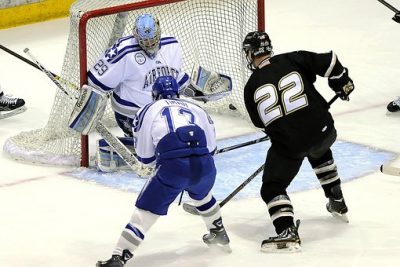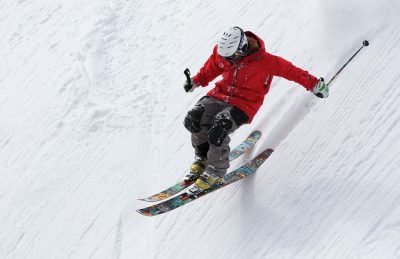The document outlines how schools should acclimate student-athletes into workouts following low-activity periods, which carry greater risk of injury or death because players have not yet adjusted to strenuous drills. It would also discourage the use of intensive workouts as a form of punishment, and establish how to properly diagnose and treat heatstroke.
Fourteen medical organizations, including the National Athletic Trainers’ Association and the Korey Stringer Institute — which strives to prevent sudden death among athletes at all levels — are reviewing the proposal and suggesting amendments. Brian Hainline, chief medical officer of the NCAA’s Sports Science Institute, said roughly half the organizations involved in the process have approved it, and the rest are expected to deliver formal reviews by Jan. 31. Hainline said he expects the document will be officially enacted and published by late spring.
“It’s a huge leap forward,” Hainline told SN, “because frankly, and we state this in the document, the vast majority of these non-traumatic catastrophic deaths and injuries are preventable.”
According to a 2017 study by University of Oklahoma head athletic trainer Scott Anderson published in the Journal of Athletic Training, 27 Division I athletes — all football players — have died from non-traumatic causes since 2000. That number does not include Maryland football player Jordan McNair, who died in June following a May 29 workout.
Still, it’s unclear how the best practices would be enforced, or whether the NCAA would eventually penalize institutions that don’t abide by the guidelines.
“Hopefully it’ll spur some dialogue and attention and cause some people to look at their programs,” Anderson said. “And you know I hear all the time, ‘The NCAA, all that is is a guideline. It has no teeth. There’s no punishment in there.’ And I understand that. But I also understand the power of a guideline.
“It’s not a law or a bylaw or legislation or anything else like that, but there’s a standard of care, and medically we violate that at our own peril. We’ve had to elevate our standard of care, our standard of how we train people. There needs to be absolutely some level of accountability and transparency.”
There was little public response from the NCAA when McNair died from heatstroke, eight months before initial review of the NCAA’s best practices guidelines. McNair’s medical treatment was marred by some of the same shortcomings that have contributed to the non-traumatic deaths of other student-athletes over the past two decades. The NCAA’s best practices proposal offers ways to avoid those mistakes.
The workout in which McNair suffered the heatstroke was the team’s first conditioning session of the summer, according to records obtained by Maryland student newspaper The Diamondback. Rather than being gradually acclimated to camp, McNair, a rising sophomore, was asked to complete a conditioning test of 10 110-yard sprints. He showed signs of exhaustion midway through the test and struggled to complete the drill, according to an independent reportcompleted by private investigative firm Walters Inc.
Maryland’s trainers then failed to meet basic protocol for diagnosing and treating heatstroke, not applying cold water immersion therapy to McNair, according to the same report. Cold water immersion is known to help patients recover from heatstroke when applied right away, according to Community Healthcare System athletic trainer John Doherty, who advises trainers in the Midwest how to respond to emergencies.
“It’s a very simple step that I work with my athletic trainers both at the collegiate and high school level constantly,” Doherty said. “I’m always reminding them that especially when there’s hot weather around, how valuable and necessary the cold water immersion stuff is because it is such a simple step and its success rate is to my knowledge 100 percent.”
After Maryland accepted “legal and moral responsibility” for McNair’s death during an August news conference, an NCAA spokeswoman told The Washington Post the university had “offered steps to ensure this does not happen again.”
At that point, however, DJ Durkin was still the Terrapins’ football coach, and assistant athletic director of athletic training Steve Nordwall and head football trainer Wes Robinson had not yet been dismissed. An independent investigationinto the football program’s culture, which found frequent instances of verbal abuse from coaches, would not conclude for another two-plus months.
When contacted for an update on Maryland’s plans to prevent future deaths, a school spokeswoman linked SN to a page listing corrective measures, saying 17 of 20 changes recommended by Walters Inc. had been completed. (Those recommendations can be found on page 67 of the below document).
The lack of action from the NCAA regarding McNair’s death consequently led critics to point out the organization’s refusal to weigh in on player safety issues while openly investigating and disciplining schools for competitive-balance violations, like paying college basketball players.
“Essentially the silence is deafening,” ESPN college basketball analyst Jay Bilas told SN. “It’s an odd feeling to see the NCAA sort of act in one fashion with regard to amateurism, and then with health and safety of athletes there’s not the same sense of urgency.”
An NCAA spokesman said the best practices currently being reviewed are the result of an NCAA-hosted information-gathering summit in 2016. That said, the document uses recommendations from a 2012 inter-association task force — composed of leading organizations in the sports medicine industry — that met independent of the NCAA and presented its findings in hopes of being formally adopted by the organization.
Hainline — who wasn’t affiliated with the NCAA at the time the 2012 task force presented its findings — said he felt the organization has moved at an appropriate pace in putting the document together. He cited required input from people throughout the college landscape, including athletic departments and school presidents who make up the board of governors.
Korey Stringer Institute head Dr. Douglas Casa, though, said better cooperation at all levels of the NCAA, particularly from football coaches, could have facilitated change sooner.
“If (the NCAA) had endorsed that back in 2012, there’s a really good chance the deaths that have happened since 2012 would have never happened,” Casa said. “Some of the things we had written were simple things that would have required modifications to prevent these deaths for happening. You know, Jordan McNair is the perfect example because it was extremely simple solutions to save Jordan’s life.”
Hainline hopes by publishing these guidelines, the NCAA can begin taking a more active stance on student-athlete health and safety. And while he and Casa both feel the best practices now being weighed are a sign of progress for improving student-athlete safety, the impact of that document will likely hinge on the receptiveness of the college sports community.
A high-ranking conference official with direct knowledge of how institutions view the NCAA’s place on this issue told SN it could prove difficult for the NCAA or conference leadership to regulate workouts. The official said schools are fiercely independent and bristle at attempts to manage their practices. Most do follow proper protocol already, the official added.
“(The NCAA and conferences) are not in the trenches, we’re not there on a daily basis,” the official said. “Now could we or should we be? That’s a philosophical question, one we’re not built for today.
“Historically, institutions have a strong desire to have their autonomy when it comes to how they spend their money, their academic integrity … and their medical training.”
To that end, Hainline emphasized his belief in a “philosophical shift” from the traditional model of self-regulating institutions to one where the NCAA provides oversight on health and safety matters — potentially even punishing schools unwilling or incapable of following along.
“I believe there should be consequences. I believe the membership and board of governors are moving in that direction,” Hainline said. “The needle is shifting. … I would say for an organization like (the NCAA), the needle is shifting rather rapidly. Others can say it’s 100 years too slow.”
Source: Sporting News

